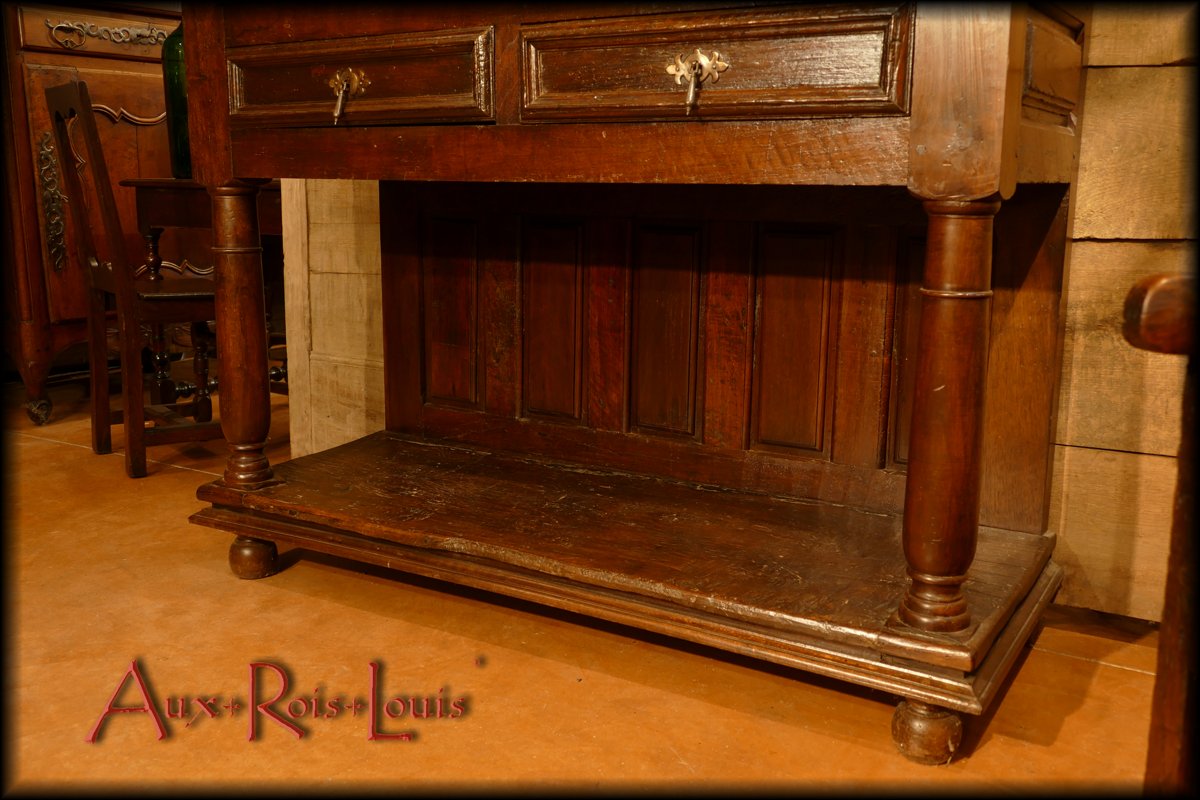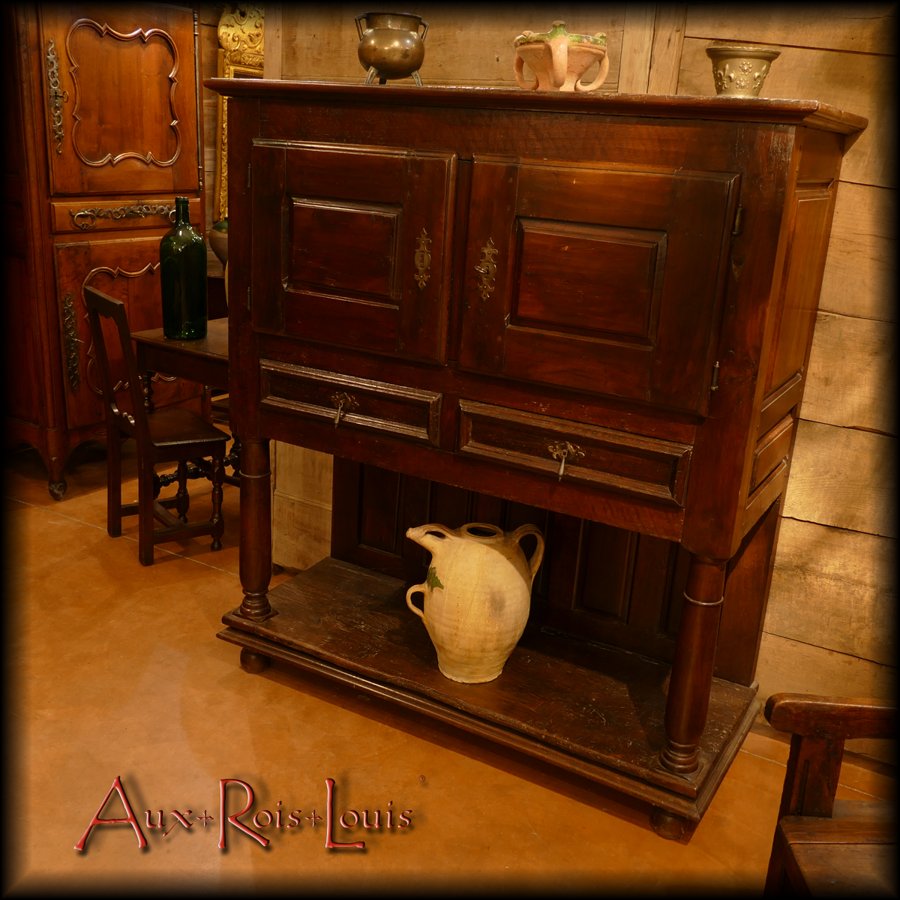For those who love the austere charm of the castles of the Kngdom of France in the pure Louis XIII style, before the influence of the Italian Renaissance intervened, this credenza is a centerpiece.
It give evidence to a precise temporal parenthesis, that of the sedentarization of the knights who will begin to provide in their fortified houses not only the essential but also the pageantry for their furniture.
This type of display called credenza was indeed intended to present pewter and earthenware services in large reception rooms.
Let us now observe all the elements that link this piece of furniture precisely to the Louis XIII style in its fullness and singularity.
From bottom to top we recognize:
- The ball feet surmounted by the presentation tray framed by a voluminous cymatium
- The paneled backsplash on the back of the credence
- The turning of the baluster columns
- The thick moldings of the drawers
The sober and robust making of the sides and doors reminiscent of the manufacturing principles of the Louis XIII style as it entered the noble houses of the knights, before the stylistic wave which will occur in the movement of the Renaissance.
Reference: ME071

![Louis XIII credenza in walnut – 17ᵗʰ century – South-West – [ME071]](https://www.aux-rois-louis.com/wp-content/uploads/2022/03/ME071_P1650727x900-900x450.jpg)
![ME071_P1650727x900 Louis XIII credenza in walnut – 17ᵗʰ century – South-West – [ME071]](https://www.aux-rois-louis.com/wp-content/uploads/2022/03/ME071_P1650727x900.jpg)

